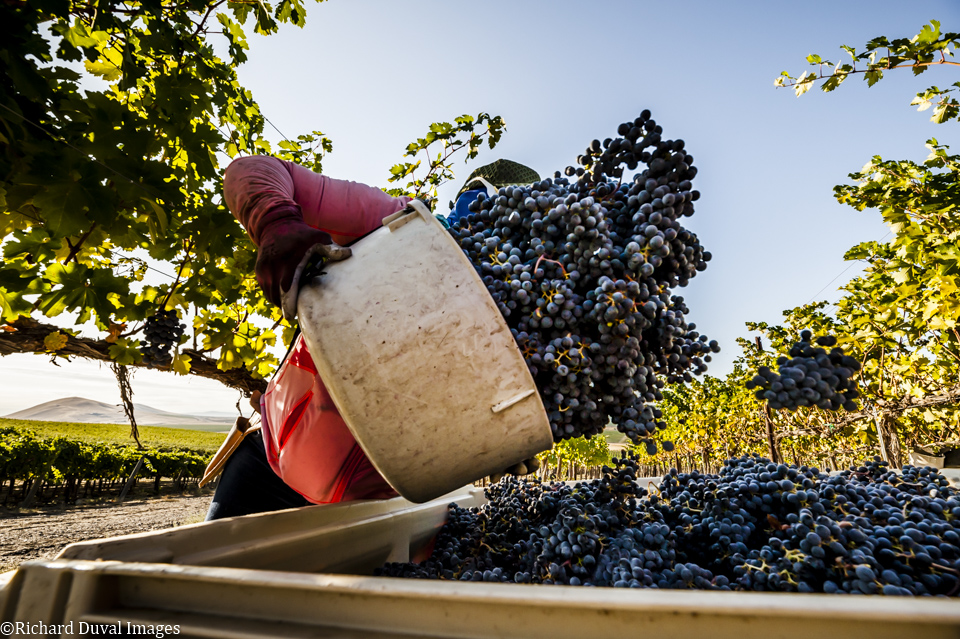The Wolf Post offers a professional service with free access, without subscription.
For this reason, a donation would also be a sign of appreciation for our work.
The Yakima Valley is located in south central Washington state, just across the spectacular Cascade Mountains from the Seattle and Portland metropolitan areas. The Valley is home to more than 40 wineries and over a third of the state’s vineyards. The region boasts over 11,000 acres of premium wine grapes.
The Valley has an important start, from the point of view of winemaking, from the 80s of the last century, with the planting of new vineyards and the opening of new cellars.
In 1983, the Yakima Valley appellation was officially designated by the United States Bureau of Alcohol, Tobacco, and Firearms. It was the first American Viticultural Area (AVA) in Washington State, and at the time also the only recognized AVA north of California. In fact, the Yakima Valley’s winemaking history dates back to the late 1800s by French winemaker Charles Schanno, but it wasn’t until the early 1960s, when Associated Vintners purchased a 5.5-acre site near the town of Sunnyside, that the Valley had an important development in vineyard planting. That area was considered particularly good because of its elevation—above the freezes along the valley floor—and south-southwest facing slopes that take advantage of the eastern Washington State sun. Over the next three decades, the Yakima Valley wine industry grew considerably.
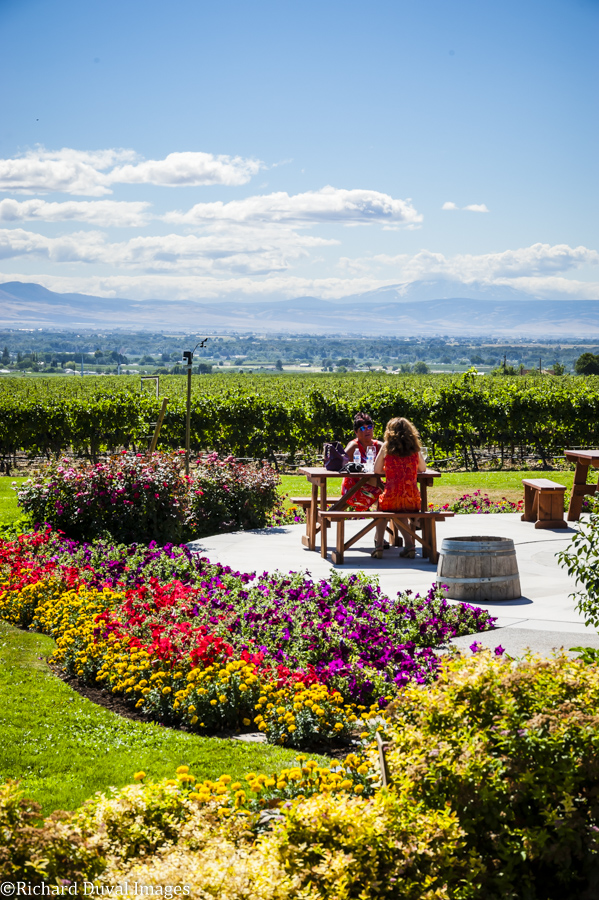
©Yakima Valley- Richard Duval Image
The Yakima Valley AVA now cultivates more than 17,000 acres of vineyards. Yakima and Benton counties are home to more than 152 wineries and together make up more than half of the wine production in Washington State.
The wines produced range from Cabernet Sauvignon and Merlot to Syrah, Voignier and Roussanne, up to Albarino, Marsanne, Carménère and Cinsaut.
With cool nights, warm days, and controlled water, Yakima Valley vineyards tend to have longer growing seasons than other wine regions. These regional cultural characteristics help develop fully ripe fruit, whose acid chemistry maintains balance during cool nights.
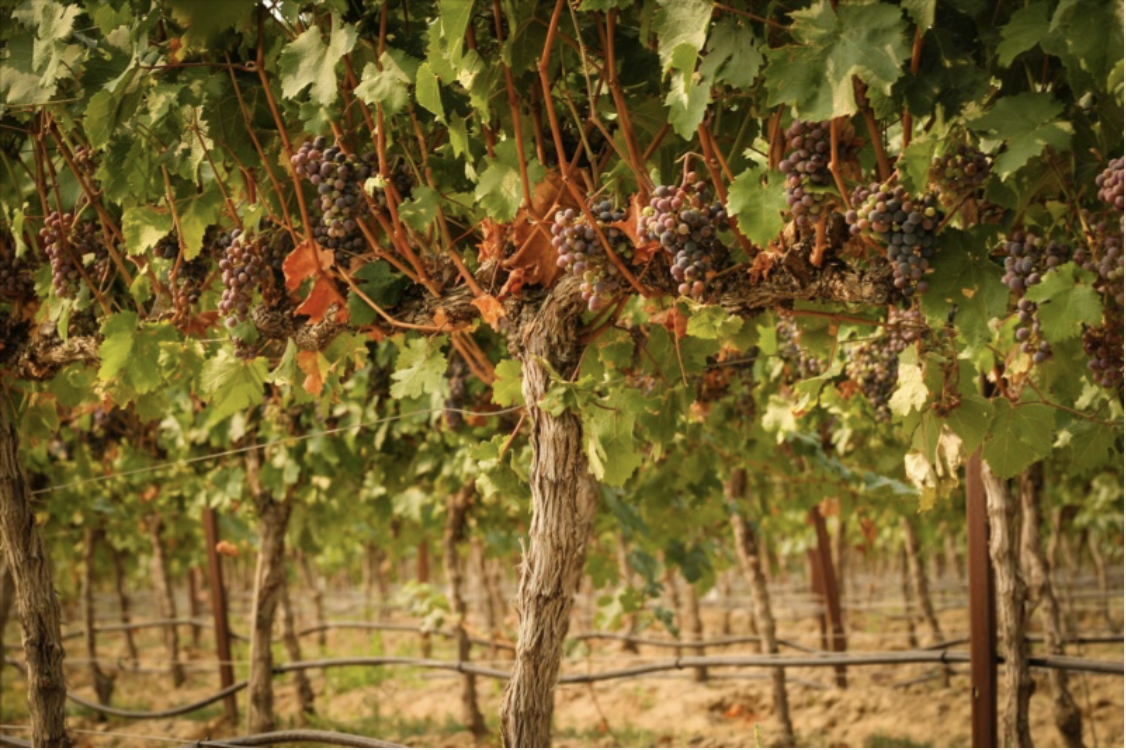
©Yakima Valley- Richard Duval Image
SOILS
Situated on the same parallel as the famous Bordeaux region of France, the Yakima Valley offers a near-perfect place to grow grapes. The Valley was carved out of a series of ancient wrinkles formed in the ground as volcanoes cooled and sank, leaving behind a large layer of basalt in the earth. Prehistoric floods also helped create optimal soils for growing wine. The floods have deposited fine silt, stratifying the soil with soils such as silt, loam, loess and pebbles, all of which offer the proper drainage needed to keep the vigor of the vine in check.
CLIMATE
The proximity of the Yakima Valley to Cascade Mountains, the orientation of many valleys, and the different elevations produce different microclimates.
The foothills of the Yakima Valley receive long hours of daylight and cool evenings providing the perfect growing environment. The region benefits from the large swing between day and night temperatures. This temperature fluctuation is considered crucial by winemakers.
The cold valley winters kill pests that are prevalent in other milder wine regions of the United States. This allows the Yakima Valley to be one of the few wine regions in the world that plants on their own rootstock.
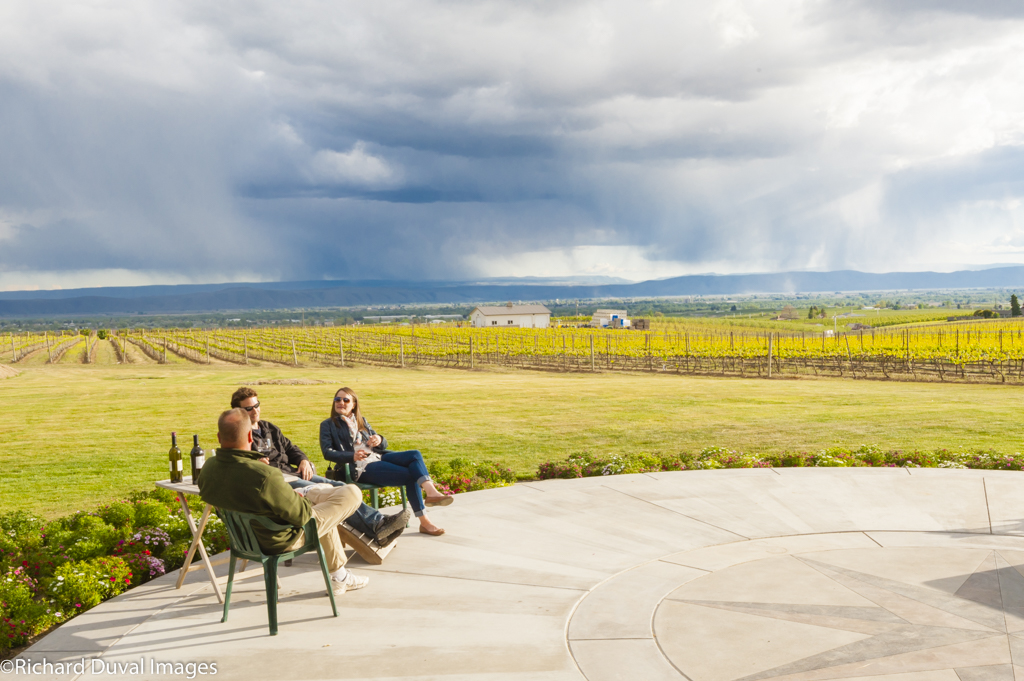
©Yakima Valley- Richard Duval Image
RAIN
The Yakima Valley is a high desert region. Irrigation water, sourced from Cascade Mountain’s snowmelt, allows Yakima Valley growers to control how much water each plant receives during the growing season. This water control allows growers to create great concentration and flavours.
GROWING SEASON
Because of the cool nights, warm days, and controlled water, Yakima Valley vines tend to have a longer growing season (averaging 190 days), giving the grapes more time to wait, resulting in fully ripe fruit whose acidic chemistry is kept in balance due to the region’s cool nights.
VARIETIES
Merlot
Usually used in blends throughout much of Europe, Merlot gained popularity as a wine in its own right in the United States in the early 1970s. Yakima Valley Merlot, with its cherry flavors and aromas, tends to be full-bodied with typically soft tannins, slightly higher alcohol than its Bordeaux cousins, and higher in acidity than California Merlots.
Cabernet Sauvignon
In its youth, the wine appears more subtle and understated than Washington Merlots. Its character can emerge as blackcurrant, cherry, berry, chocolate, leather, mint, herbs, bell pepper or any combination of these. This wine ages beautifully. While several years of bottle aging are often required for the wine to show its best, most can be enjoyed in its youth. Many of the Yakima Valley’s winemakers employ traditional blending practices, adding Merlot or Cabernet Franc to the wine.

©Yakima Valley- Richard Duval Image
Syrah
The first Syrah grapes were planted in the Yakima Valley in 1986. National recognition for Yakima Valley Syrahs has led to a substantial increase in Syrah plantings in recent years. Syrah is just one of the Rhône varieties sparking new interest in Washington State. A spicy, rich and complex varietal, Syrah grapes make big, dark, intensely concentrated wines with aromas and flavors of blackberries, black currants, roasted coffee and leather.
Cabernet Franc
Cabernet Franc has captured the attention of Washington winemakers who are exploring the grape’s unique varietal characteristics, using it both as a blending grape and as a stand-alone variety.
Chardonnay
The most widely grown grape in the Yakima Valleys is also the best manifestation of the state’s special winemaking character. Different styles made by Washington winemakers range from crisp oak-free versions to richer barrel-fermented wines. Both of these styles display Chardonnay’s varietal intensity and typical Washington acid balance. Many wineries also use ferm secondary malolactic fermentation to add rich vanilla and buttery undertones.
Riesling
Yakima Valley Riesling is one of the original grape varieties grown in Washington and one of the first to draw national attention to Washington wines. Rieslings from the valleys tend to be very floral on the nose, with lively apricot and peach flavours. Most Washington Rieslings are vinified in a dry to slightly sweet style, all balanced with good acidity.
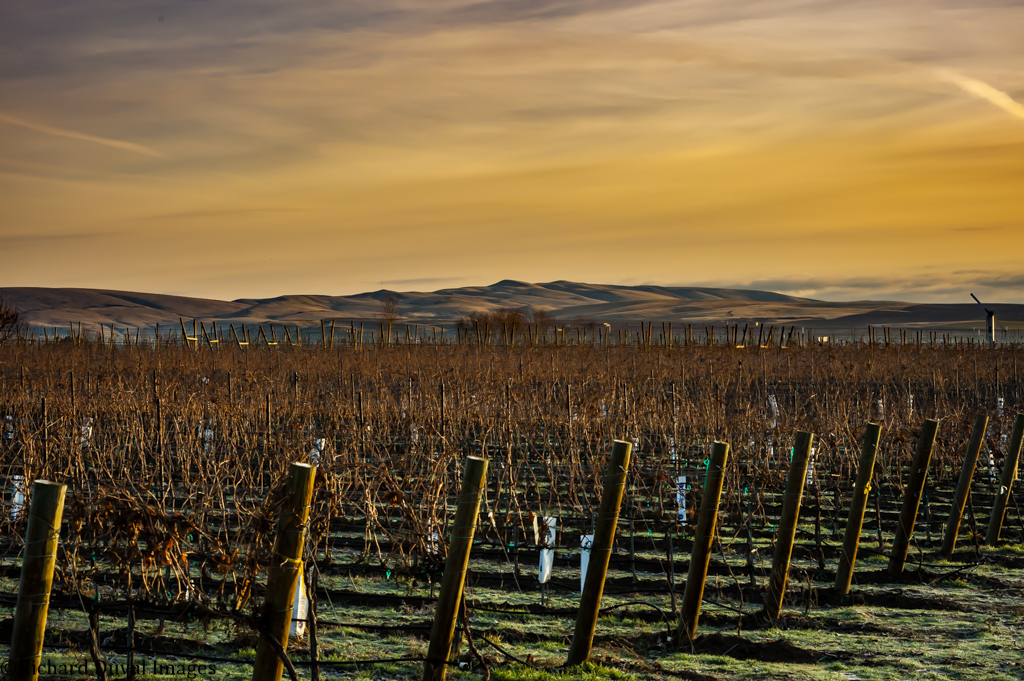
©Yakima Valley- Richard Duval Image
Semillon
Washington is known for its Semillon, and while this wine is most often enjoyed young, Washington Semillon is known to age beautifully into rich, honeyed, nutty wines. When young, it offers a broad spectrum of flavors, ranging from crunchy citrus to melon and fig, fresh pears to vanilla. A wine with slightly less acidity than Sauvignon Blanc, Semillon is succulent, yet light.
Sauvignon Blanc
These grapes produce wines that appear under two names: Sauvignon Blanc and Fumé Blanc. They are becoming increasingly popular for their distinctive character, often described as fruity with a hint of herbaceousness and lively acidity. As with the Chardonnay, styles range from slightly tart and grassy to tangy pineapple laced with oak.
Gewürztraminer
One of Washington’s first success stories due to its ability to withstand cold winters, Gewürztraminer typically offers allspice and tropical fruit with pungent aromas and flavors. Previously made only in a non-dry or slightly sweet style, Gewürztraminer is now being explored by Washington winemakers looking to make dry wine.


